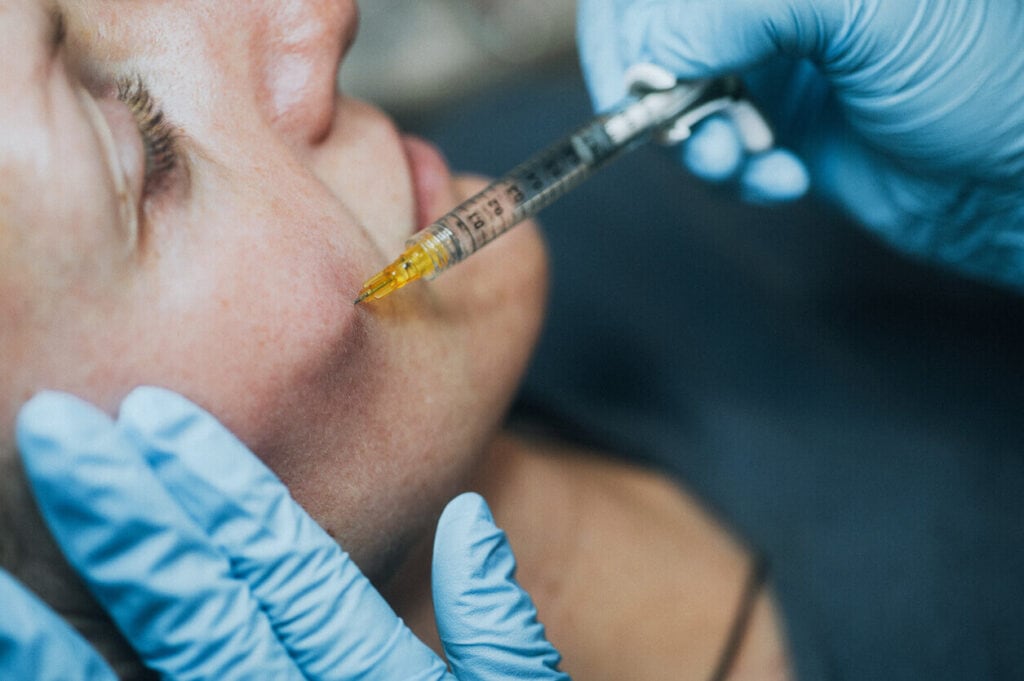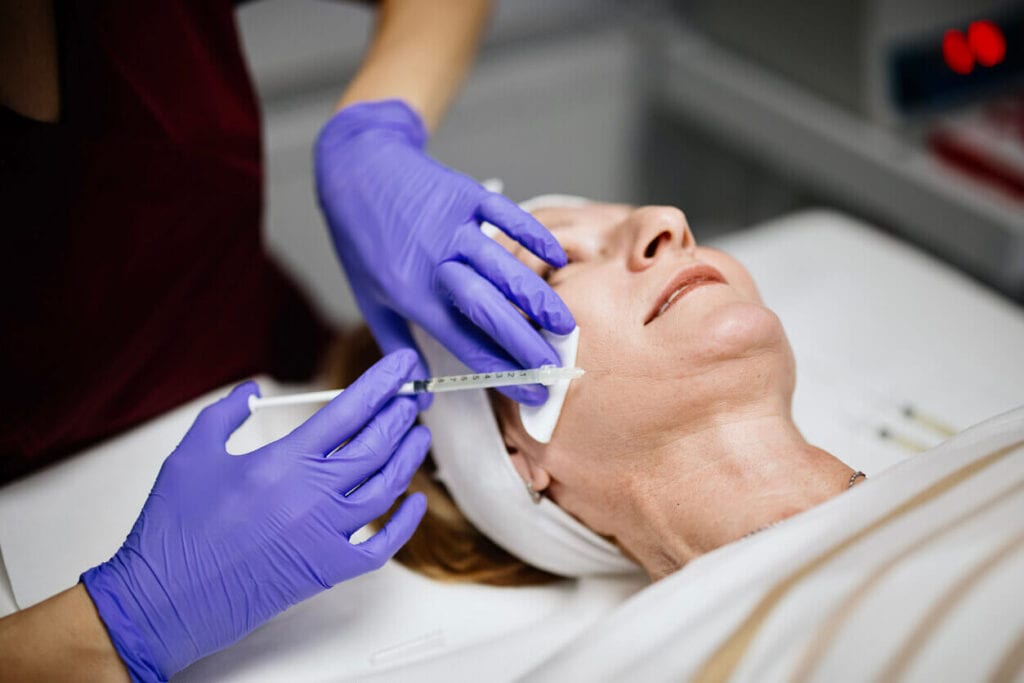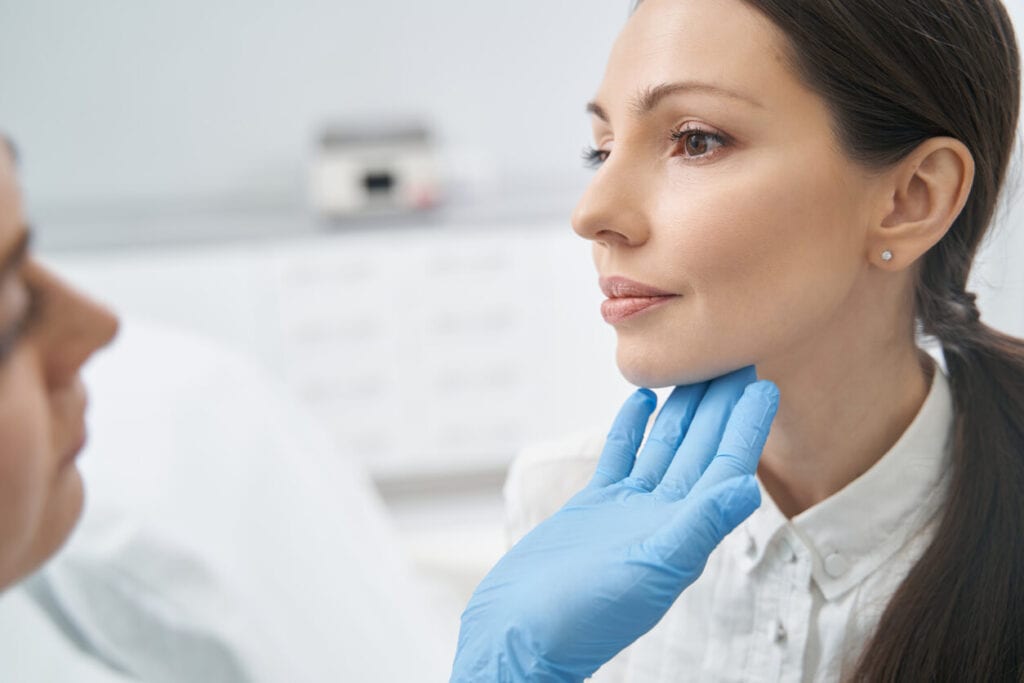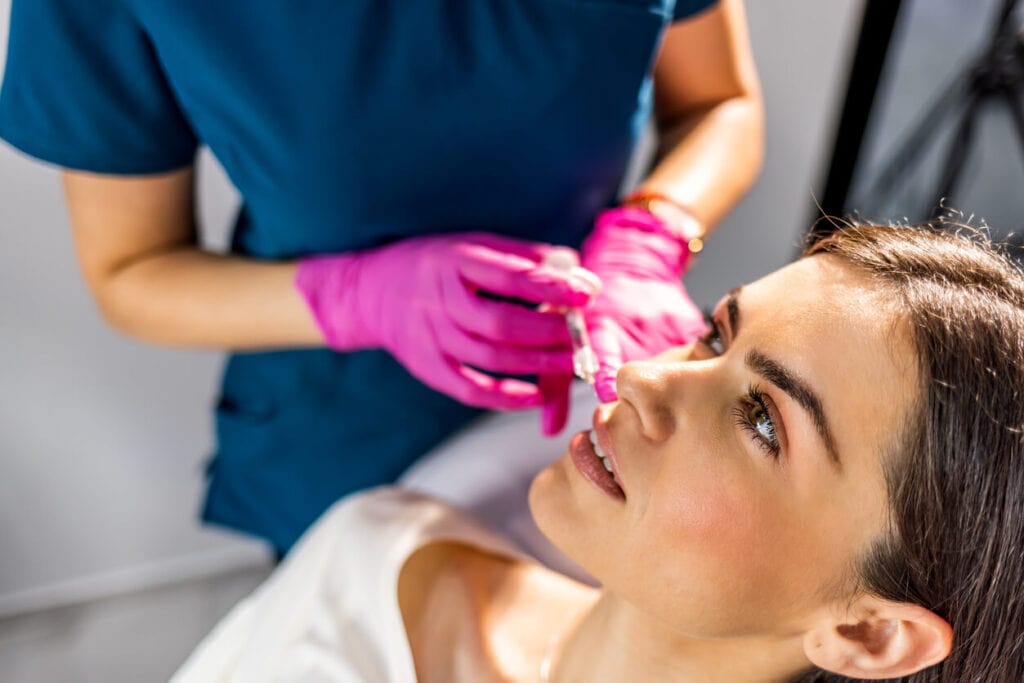The undeniable passage of years leaves its mark on our skin.
This can lead to the emergence of wrinkles, fine lines, and the gradual loss of volume. This reality has sparked a growing concern among individuals determined to preserve their vibrancy.
While there’s no way to stop the clock, scientific advancements have endowed us with cosmetic solutions that can wind back the clock, even if just a little. Among these, injectable dermal fillers and Botox have taken the forefront, becoming globally acclaimed cosmetic procedures.
Both treatments share the goal of rejuvenating the skin and restoring a more youthful appearance, but they approach this pursuit in different ways.
Those contemplating these transformative options should clearly understand what they entail and how they work. So, here is everything you need to know about Botox and dermal fillers.

What Is Botox?
Botox, short for Botulinum Toxin, is a neurotoxic protein derived from the bacterium Clostridium botulinum. While the word “toxin” might raise concerns, Botox has found an exceptional and controlled role in cosmetic and medical applications.
When injected into specific muscles, Botox temporarily paralyses them and prevents them from contracting, thus smoothening out the overlying skin. This relaxation effect softens lines and wrinkles that often develop due to repeated facial expressions, such as frowning or squinting.
The onset of results usually becomes noticeable within a few days after the procedure and reaches its peak in about two weeks. The effects gradually wear off over several months as the body metabolises the Botox.
What Is Botox Used to Treat?
Botox has gained widespread popularity for its cosmetic applications, helping individuals achieve a more youthful and refreshed appearance. Here are some of the main cosmetic uses of Botox:
Frown Lines (Glabellar Lines)
The most common cosmetic use of Botox is to treat the vertical lines that appear between the eyebrows, known as glabellar lines or frown lines. These lines can give a person a perpetually angry or tired appearance. Botox injections in this area relax the muscles responsible for these lines, leading to a smoother forehead and a more relaxed appearance.
Crow’s Feet
These are the fine lines that radiate from the corners of the eyes when a person smiles or squints. Botox can be injected around the eyes to diminish the appearance of these lines, creating a more youthful and vibrant look.
Forehead Lines
Horizontal lines that form on the forehead due to facial expressions and ageing can be softened with Botox injections. By relaxing the muscles responsible for creating these lines, Botox helps to smooth out the forehead and reduce the visibility of wrinkles.
Bunny Lines
These are the diagonal wrinkles that appear on the sides of the nose when a person smiles or scrunches up their face. Botox can soften these lines and create a smoother overall appearance.
Lip Lines (Smoker’s Lines)
Botox injections can help reduce the appearance of fine lines and wrinkles around the lips, commonly referred to as smoker’s lines. By relaxing the muscles in this area, Botox can create a smoother upper lip and reduce the appearance of these lines.
Brow Lift
Botox injections can give a subtle lift to the eyebrows, creating a more awake and rejuvenated appearance. Botox can create a lifting effect by relaxing the muscles that pull the eyebrows downward.
The success of Botox treatments largely depends on the skill and experience of the administering healthcare professional. Consult a qualified medical practitioner to ensure safe and optimal outcomes.

What Are Dermal Fillers?
Dermal fillers, often called soft tissue or injectable fillers, are gel-like substances injected into the skin to restore volume, smoothen wrinkles, and enhance facial contours.
Most dermal fillers are composed of hyaluronic acid (HA), a naturally occurring substance in the body. The two popular hyaluronic acid dermal fillers are Restylane and Juvederm®.
Hyaluronic acid is known for its ability to retain moisture and promote hydration within the skin. In the context of dermal fillers, HA is synthetically produced and then injected into specific areas of concern. Once injected, hyaluronic acid fillers work in two main ways:
- Volume Restoration. As we age, the skin gradually loses its natural stores of collagen and hyaluronic acid. This can lead to a loss of volume and elasticity. Hyaluronic acid dermal fillers are designed to replenish this lost volume. When injected into target areas, the gel-like substance binds to water molecules, creating a plumping effect. This can help reduce wrinkles and fine lines while restoring youthful contours to the face.
- Stimulation of Collagen Production. Hyaluronic acid fillers can also stimulate the production of collagen, a protein that provides structural support to the skin. As the filler integrates into the skin’s tissues, it triggers the body’s natural collagen-building processes. This secondary effect contributes to longer-lasting results, as the new collagen helps maintain the skin’s improved texture and volume over time.
Other dermal fillers comprise various materials, including calcium hydroxylapatite, poly-L-lactic acid, and polymethylmethacrylate microspheres, each serving a unique purpose and having distinct properties. Depending on the type of filler used and the area treated, the results can last anywhere from several months to over a year.
What Are Dermal Fillers Used For?
Dermal fillers have gained immense popularity due to their versatility in addressing various aesthetic concerns. Some common uses of dermal fillers include:
Wrinkle Reduction
Dermal fillers can fill fine lines and wrinkles, particularly those resulting from the natural ageing process or sun damage. They are often used to target lines around the mouth, forehead, as well as between the eyebrows.
Volume Restoration
As we age, we may experience volume loss in areas like the cheeks, temples, and under-eye hollows. Dermal fillers can restore youthful plumpness to these areas, resulting in a more rejuvenated appearance.
Lip Enhancement
Dermal fillers can augment the lips, adding volume and defining the lip border for a fuller yet natural look.
Facial Contouring
Fillers can be strategically injected to contour the face by enhancing the chin, defining the jawline, and sculpting the cheekbones.
Scar Revision
Dermal fillers can help minimise the appearance of certain types of scars by raising the depressed scar tissue to the level of the surrounding skin.
Hand Rejuvenation
Fillers can also be used to restore volume to the hands. This helps reduce the visibility of veins and tendons and gives the hands a more youthful appearance.
Dermal fillers are temporary solutions, and their longevity can vary depending on factors such as the type of filler used, the treated area, and the individual’s metabolism.

What Are the Benefits of Botox and Dermal Fillers?
Botox and dermal fillers offer a range of benefits that appeal to individuals seeking to enhance their appearance without undergoing surgery. Here are ten key benefits of these non-surgical treatments:
1. Minimal Downtime
Non-surgical treatments excel in their ability to require little to no downtime. Unlike surgical interventions that often demand weeks of recovery, Botox and dermal fillers allow individuals to return to their daily routines almost immediately after treatment. This convenience especially appeals to individuals with busy schedules or those who wish to avoid prolonged recovery periods.
2. Quick Procedure
Efficiency is a hallmark of non-surgical treatments. These procedures can often be completed within a matter of minutes. For example, Botox injections involve a series of tiny, strategically placed injections that can be administered during a short office visit. This is an attractive feature for those seeking timely results without investing significant time.
3. Natural-Looking Results
Skilled practitioners can use dermal fillers to subtly enhance facial features, restore lost volume, as well as smoothen wrinkles without creating the overly altered appearance sometimes associated with more invasive surgical procedures. This outcome allows individuals to enhance their beauty while maintaining their unique characteristics.
4. Reversible Effects
Non-surgical treatments often offer reversible effects, providing a sense of control and flexibility. If an individual is dissatisfied with a dermal filler or Botox treatment results, adjustments can be made, or the effects can be gradually reversed over time. This feature provides peace of mind and reduces the fear of permanent changes.
5. Immediate Results
Procedures like dermal fillers yield immediate results, allowing individuals to witness visible improvements in their appearance right after treatment. While some effects may continue to refine over the following days, the immediate enhancement can significantly boost self-confidence.
6. Minimal Scarring
Non-surgical treatments involve injections rather than incisions, significantly reducing the risk of scarring. This is a particularly enticing advantage for individuals who wish to avoid visible scars that can result from surgical procedures. The absence of scars also contributes to a more discreet enhancement process.
7. Personalised Approach
Practitioners can tailor non-surgical treatments to cater to each individual’s unique needs and preferences. Dermal fillers, for example, can be strategically administered to target specific areas such as lips, cheeks, or nasolabial folds. This personalised approach allows for a customised enhancement that complements an individual’s natural beauty.
8. Temporary Effects
Temporary outcomes can be advantageous, contrary to the notion of permanence often associated with cosmetic procedures. Non-surgical treatments, by nature, offer results that gradually fade over time. This attribute benefits those who want to experiment with their appearance, try different enhancements, or simply desire flexibility in their cosmetic journey.
9. Lower Risk and Complications
Non-surgical treatments carry a lower risk of complications compared to their surgical counterparts. Although no medical procedure is entirely risk-free, non-surgical treatments are generally considered safer and have a lower incidence of severe adverse effects. This aspect makes them an attractive option for individuals seeking cosmetic improvements with a reduced level of risk.
10. Cost-Effective
Surgical procedures encompass the expense of the procedure itself and additional costs like anaesthesia, facility fees, and potentially extended recovery periods. Non-surgical treatments, in contrast, offer noticeable enhancements at a fraction of the cost, making them accessible to a wider range of individuals.

What Are the Potential Side Effects and Risks of Botox and Fillers?
Botox and dermal fillers are generally safe when administered by qualified and experienced practitioners.
However, like any medical procedure, there are potential side effects and risks associated with these treatments. Here are some potential side effects and risks of Botox:
- Bruising and Swelling: After Botox treatments, mild bruising and swelling at the injection sites are common. These effects are usually temporary and subside within a few days.
- Headache: Some individuals may experience a mild headache after Botox injections, but this is usually temporary and resolves quickly.
- Drooping or Asymmetry: Botox can cause temporary drooping of eyelids or eyebrows in rare cases. This usually occurs when the injected substance spreads to unintended areas. Skilled practitioners aim to minimise this risk by carefully selecting injection sites.
- Allergic Reactions: Although rare, some individuals may experience an allergic reaction to Botox. Symptoms might include itching, rash, or difficulty breathing. Seek medical attention if you experience any signs of an allergic reaction.
- Unintended Effects: Botox injections could inadvertently affect adjacent muscles, causing unintended facial expressions. This can occur if the injections are not administered by a trained practitioner.
Dermal fillers can also cause side effects, such as swelling, bruises, and redness, that go away after a while.
Some patients might feel lumps or bumps in the treated area, which a doctor or nurse can rub or treat. Serious but rare side effects could include an infection, an allergic response, or problems with a blood vessel if the filler is injected into a blood vessel by accident.
Most individuals who undergo Botox and dermal filler treatments experience minimal side effects and enjoy positive results.
However, being informed about potential risks empowers you to make an educated decision and take steps to minimise these risks through careful practitioner selection and adherence to aftercare guidelines.

Botox or Dermal Fillers: Which Treatment is Right for You?
Choosing between Botox and dermal fillers depends on your aesthetic goals, concerns, and the specific areas you want to address. Both treatments offer distinct benefits and target different aspects of facial ageing.
Botox is suitable for individuals with dynamic wrinkles who want a more youthful and refreshed appearance. It’s also effective as a preventive measure for younger individuals looking to delay the onset of wrinkles. Botox results typically appear within a few days to a week after treatment and can last around three to four months.
On the other hand, dermal fillers are suitable for individuals seeking to restore lost volume, enhance specific facial features, and smooth deep wrinkles. They can also provide non-surgical alternatives to procedures like cheek augmentation and lip enhancement. Dermal filler results are immediate and can last from six to eighteen months, depending on the type of filler used and individual factors.
In many cases, a combination of Botox and dermal fillers can provide comprehensive facial rejuvenation. Botox can address dynamic wrinkles, while dermal fillers can restore volume and create smoother contours.
A skilled practitioner will assess your facial anatomy, discuss your goals, and create a personalised treatment plan that may involve both Botox and dermal fillers for optimal results.

Preparing for Botox and Dermal Filler Treatments in London
Before enhancing your appearance with Botox and dermal fillers, you should thoroughly prepare to ensure a smooth and successful experience. Here are some tips to help you prepare:
Choose a Qualified Practitioner
Selecting the right practitioner is crucial to achieving safe and effective results. Look for licensed and board-certified professionals who specialise in cosmetic procedures. Check their credentials, reviews, and before-and-after photos to assess their expertise and track record. A skilled practitioner will also guide you through the process and provide personalised recommendations based on your unique facial features and goals.
Communicate Openly
During your consultation, be open and honest about your medical history, allergies, medications, as well as any past cosmetic procedures. This information helps your practitioner make informed decisions and tailor the treatments to your specific needs. Transparency is essential for a successful treatment experience.
Set Realistic Expectations
Have realistic expectations regarding the results of Botox and dermal filler treatments. While these procedures can create noticeable improvements, they might not achieve the same transformative effects as surgical interventions. Discuss your goals with your practitioner to ensure they align with what the treatments can realistically offer.
Avoid Blood Thinners
In the weeks leading up to your treatment, avoid medications and supplements that thin the blood, such as aspirin, ibuprofen, and certain herbal supplements. These substances can increase the risk of bruising and bleeding during and after the procedure. Consult your practitioner for a list of medications to avoid, and for guidance on managing any medical conditions you may have.
Plan Around Events
If you have an important event or occasion coming up, it’s wise to schedule your treatments well in advance. Botox and dermal filler effects might take a few days to fully develop, so planning ahead ensures that you look and feel your best for your special event.
By following these comprehensive steps, you’ll be well-prepared to confidently undergo Botox and dermal filler treatments. Remember, everyone’s journey is unique, so take the time to tailor these preparations to your specific needs and circumstances.

Botox and Dermal Fillers Recovery and Aftercare Guidelines
After undergoing Botox and dermal filler treatments, proper recovery and diligent aftercare are crucial to achieving optimal results and minimising potential side effects.
1. Avoid Touching and Massaging
After getting Botox and dermal filler injections, avoid touching or massaging the treated areas for at least 24 to 48 hours. This precaution minimises the risk of unintentionally affecting the placement or distribution of the fillers. Touching the treated areas can also introduce bacteria, potentially leading to infections or other complications.
2. Stay Upright and Avoid Strenuous Activities
For the first few hours following the treatment, it’s advisable to stay in an upright position and avoid strenuous physical activities. This helps prevent the migration of the injected substances and reduces the risk of bruising, swelling, or other potential side effects. Engaging in intense exercise or activities that involve bending over might increase blood flow to the treated areas and affect the distribution of the fillers.
3. Minimise Sun Exposure
Direct sun exposure can exacerbate swelling and irritation in the treated areas. Avoid prolonged sun exposure for at least 24 to 48 hours after the treatment to protect your skin and optimise the healing process. If you need to be outside, wear a wide-brimmed hat and apply a broad-spectrum sunscreen with a high SPF to shield your skin from harmful UV rays.
4. Stay Hydrated and Avoid Alcohol and Caffeine
Proper hydration is essential for promoting skin health and facilitating the healing process. Drink plenty of water in the days following your treatment to keep your skin well-hydrated. Also, avoid alcohol and caffeine, as these substances can contribute to dehydration and potentially increase the risk of bruising or swelling.
5. Be Mindful of Makeup and Skincare Products
After Botox and dermal filler treatments, it’s best to avoid applying makeup or skincare products to the treated areas for at least 24 hours. This allows the injected substances to settle and minimises the risk of irritation or infection. When resuming your skincare routine, use gentle products and avoid exfoliants or harsh ingredients that could irritate the skin.
6. Follow Post-Treatment Instructions
Your practitioner will provide you with specific post-treatment instructions tailored to your individual needs and the type of procedure you underwent. These instructions may include recommendations for avoiding specific activities, using cold compresses to reduce swelling, and taking over-the-counter pain relievers if necessary. Follow these instructions carefully to ensure a smooth recovery and optimise your results.
Botox and Dermal Filler Treatments at Face Clinic London
Thanks to the transformative power of Botox and dermal fillers, the journey to maintaining youthful and refreshed skin is now quick and simple. These non-surgical treatments offer a remarkable way to combat the effects of ageing, allowing you to enhance your appearance and boost your confidence without the need for invasive procedures. Combining these treatments enables a comprehensive approach to facial rejuvenation, addressing dynamic wrinkles and volume loss for a harmonious and natural result.
Are you in London and looking for a trusted clinic in your journey towards ageless radiance? Face Clinic London specialises in non-surgical cosmetic treatments, including Botox and dermal fillers. With a team of trained and fully qualified doctors, we deliver natural and youthful results that align with your individual goals.
Contact us today to book your consultation and embark on a journey to a more radiant and timeless you.
Book Appointment
All treatments are carried out by our team of doctors at our London Botox clinic. Appointments can be booked online, via email or by calling our Soho clinic on 020 7851 6624 during opening hours. We are located a few minutes walk away from Carnaby Street.
Call our clinic team if you have any questions
View our prices
Or email us
